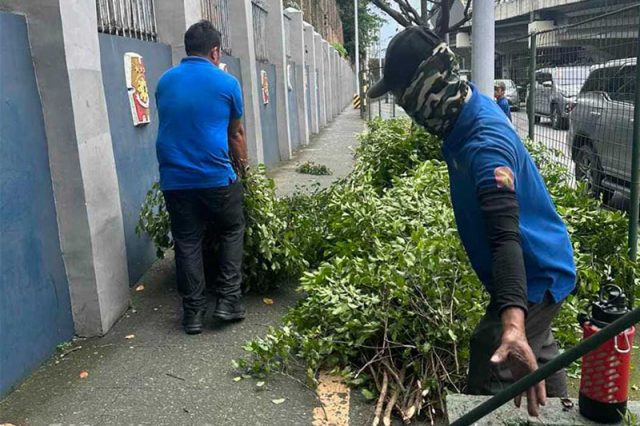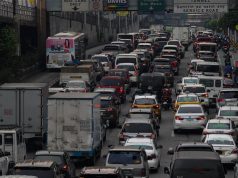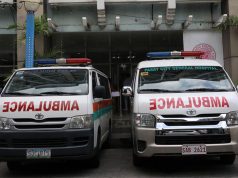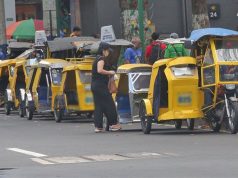
The Metropolitan Manila Development Authority drew flak after it posted about the trimming of trees activity to protect power lines.
The deleted post opened talks about the need to plant more trees amid the scorching heat during this warm and dry season.
In a now-deleted post, the MMDA on Monday reported that it trimmed some trees in some primary cities in Metro Manila to protect power lines or prevent branches from falling on lampposts and pathways.
“Ngayong mainit ang panahon, nagsaagawa ng trimming activity ang MMDA sa ilang puno sa mga pangunahing lansangan sa Metro Manila upang makaiwas sa panganib na maaaring maidulot nito sa publiko,” it said on a post on the X (formerly Twitter) platform.
“Importanteng alisin ang malagong sanga na maaaring sumabit sa mga linya ng kuryente o bumagsak sa mga lamp posts at daanan na pwedeng magdulot ng peligro,” the MMDA added.
It earned criticism from some Filipinos who argued that trees are more needed this dry season as residents, especially in urban areas, experience high heat index levels.
“Ang init na ng panahon [tapos] trimming activity pa sa puno??? Itatapal ko kayo sa butas ng ozone layer eh,” an online user wrote in response to the deleted post.
A Facebook user shared a link from the United States Environmental Protection Agency (US EPA) reporting about the benefits of trees to “reduce urban heat islands.”
“US Environment Protection Agency: Trees and other plants help cool the environment, making vegetation a simple and effective way to reduce urban heat islands. Meanwhile, the MMDA,” the Facebook user wrote, sharing a screengrab of the now-deleted MMDA post.
The traffic authority has been conducting tree-trimming activities in the past as part of its efforts to clear away branches that may obstruct power lines and lamp posts, as well as those that may fall on the road and cause accidents to motorists and pedestrians.
The activity is not limited to the dry season. Last November, the MMDA shared a photo of a similar initiative.
It also conducted the same activity in October 2023.
A 2023 operations manual of the MMDA’s Health, Public Safety and Environment Protection Office showed that the trimming activity is part of its duty to “prune” and “trim” trees and plants.
Local government units, national government agencies and non-government organizations can also request the MMDA’s assistance in trimming, pruning and balling operations.
They must provide a barangay permit and a permit from the Department of Environment and Natural Resources to the MMDA chairman or the Assistant General Manager for Operations (AGMO) for the activity.
An inspection will also be conducted in the area to verify the details for the pruning, trimming or balling operation.
The MMDA said that it can defer the execution of the request if there are no permits from the barangay and the DENR, unless it is “an emergency and post danger to lives and property” such as in cases of typhoons and road obstruction cases.
It is also the agency’s duty to plant trees and assorted ornamental plants as part of its greening and landscape maintenance services.
These include procuring garden soil for plants, fertilizing flora, procuring full-grown trees, and digging holes for tree planting.
Meanwhile, experts note that tree trimming near power lines is important since branches can threaten electrical installations, infrastructures and poles, which in turn may affect the delivery of electricity to buildings and other structures.
Apart from this, the activity is also needed to maintain public safety in cases of storms and high winds so fires and instances of power failure may be prevented.
It is likewise done to facilitate essential maintenance work in the area.
Meanwhile, the US EPA said that “trees and other plants help cool the environment.”
“Trees and vegetation (e.g., bushes, shrubs, and tall grasses) lower surface and air temperatures by providing shade and cooling through evaporation and transpiration, also called evapotranspiration,” the agency said on its website.
“Transpiration is a process in which trees and vegetation absorb water through their roots and cool surroundings by releasing water vapor into the air through their leaves. Trees and vegetation also provide cooling through evaporation of rainfall collecting on leaves and soil. Research shows that urban forests have temperatures that are on average 2.9°F lower than unforested urban areas,” it added.
“Trees and vegetation are most useful as a mitigation strategy when planted in strategic locations around buildings or to shade pavement in parking lots and on streets. Researchers have found that planting deciduous trees or vines to the west is typically most effective for cooling a building, especially if they shade windows and part of the building’s roof,” US EPA said.
The agency added that trees and vegetation in urban environments can improve air quality and lower greenhouse gas emissions by reducing energy demand.









